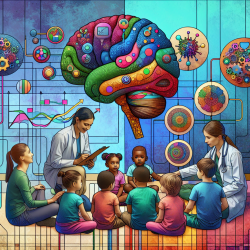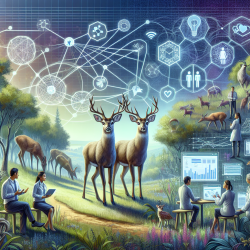Uncover the Secret to Improving Your Therapy Skills: What Big History Can Teach Us!
As a Special Education Director, you are constantly seeking ways to enhance your skills and provide better services to students. The concept of "Big History," as presented in the research paper "The Natural Science Underlying Big History," offers a unique perspective that can be applied to your practice. This interdisciplinary approach connects various complex systems, including galaxies, stars, life, and society, through the lens of cosmic evolution.
Understanding the principles of Big History can provide valuable insights into the interconnectedness of systems and the role of energy in facilitating complexity. This knowledge can be instrumental in addressing challenges such as therapist staffing shortages and ensuring legal compliance in special education.
Key Takeaways from Big History
- Energy as a Facilitator: Energy flows are central to the evolution of complex systems. In the context of therapy, this can be likened to the resources and support needed to foster student development and learning.
- Interconnected Systems: Just as galaxies and stars are part of a larger cosmic narrative, students are part of a broader educational ecosystem. Recognizing these connections can help in creating more holistic and effective therapy plans.
- Adaptation and Evolution: Systems evolve through adaptation and selection. Similarly, therapy practices must adapt to the changing needs of students and the educational landscape to remain effective.
Implementing Big History Insights in Therapy
By applying the principles of Big History, practitioners can develop a more comprehensive understanding of the factors influencing student outcomes. This can lead to more targeted interventions and improved therapy strategies. Here are some ways to incorporate these insights into your practice:
- Holistic Assessment: Consider the various systems and factors affecting a student's learning environment. This can include family dynamics, school resources, and community support.
- Resource Optimization: Like energy flows in cosmic evolution, optimize the resources available to support student growth. This includes leveraging technology, collaborating with other educators, and engaging with families.
- Continuous Learning: Stay informed about the latest research and developments in special education and therapy. This will enable you to adapt your practices and provide the best support for your students.
To delve deeper into the research and explore the full potential of Big History in your practice, consider reading the original research paper, The Natural Science Underlying Big History.
Conclusion
By embracing the insights of Big History, special education practitioners can enhance their understanding of complex systems and improve their therapy skills. This approach encourages a holistic view of student development, emphasizing the importance of interconnectedness and resource optimization. As you continue to grow in your role, consider how these principles can be applied to create more effective and impactful therapy strategies.










